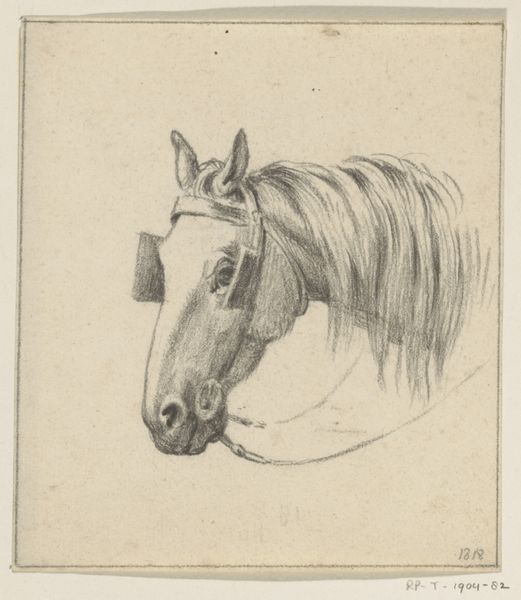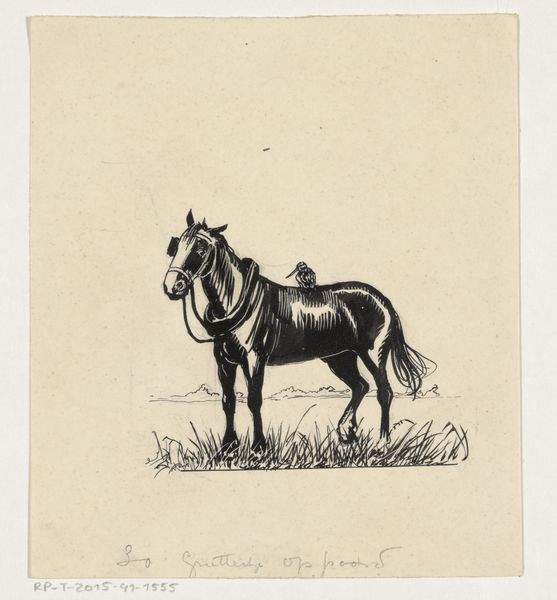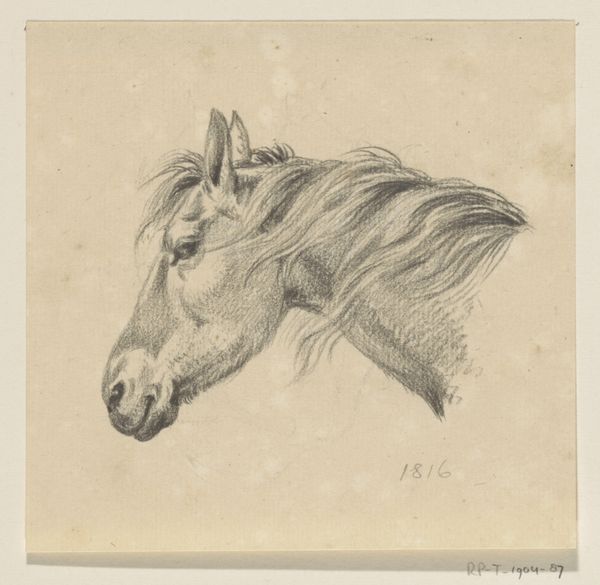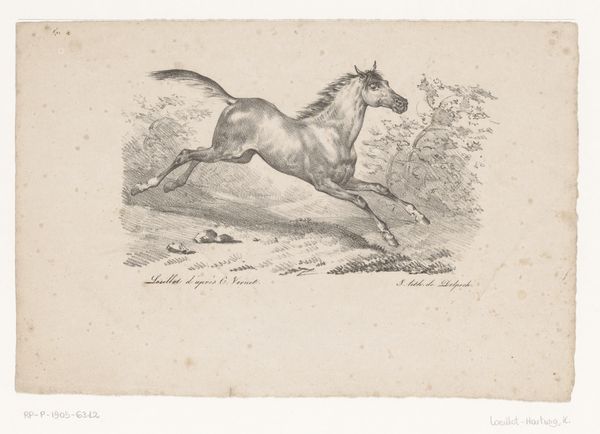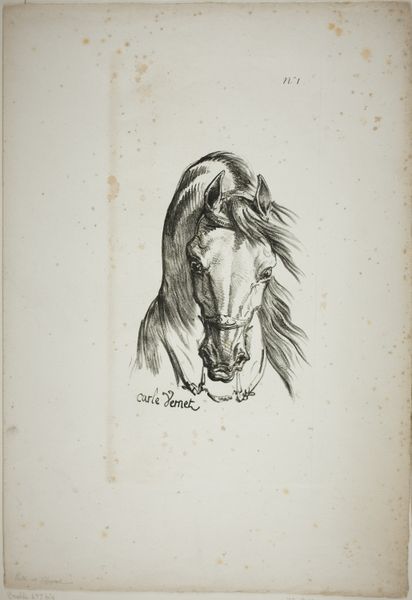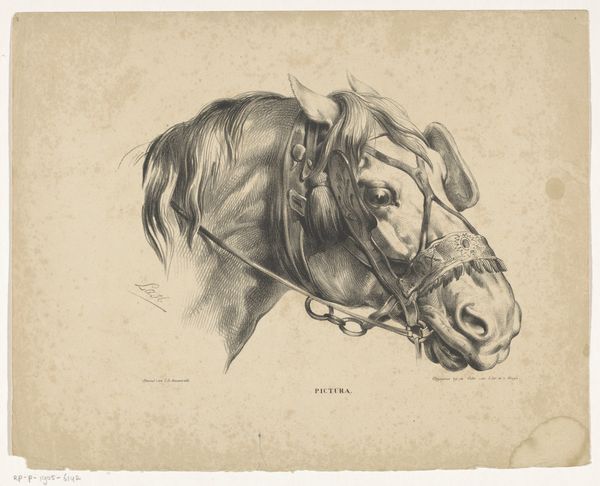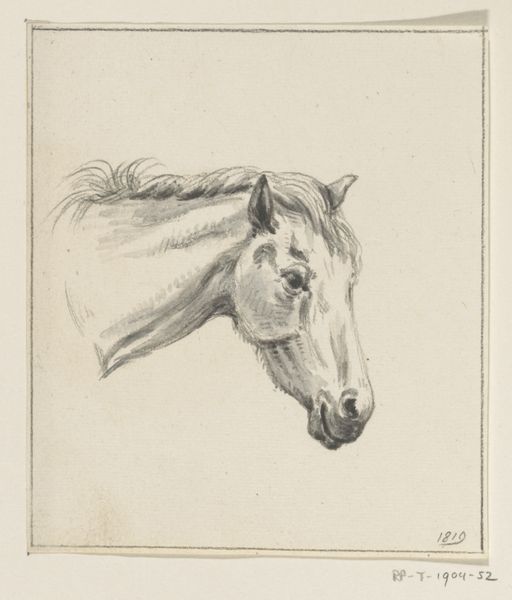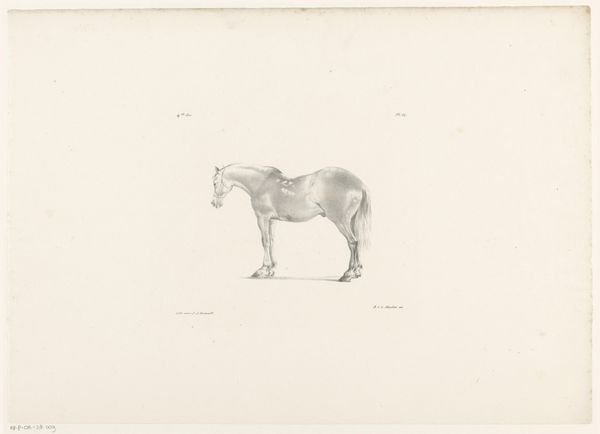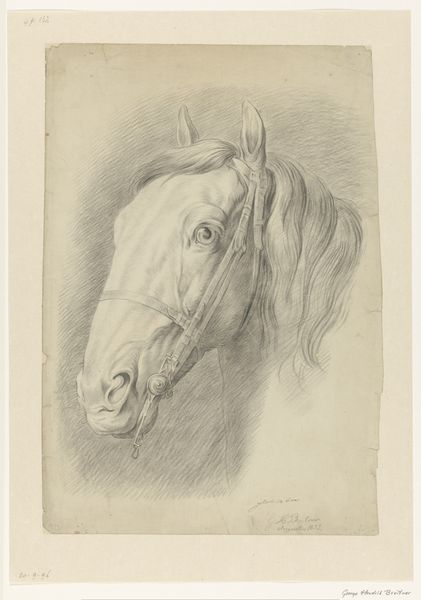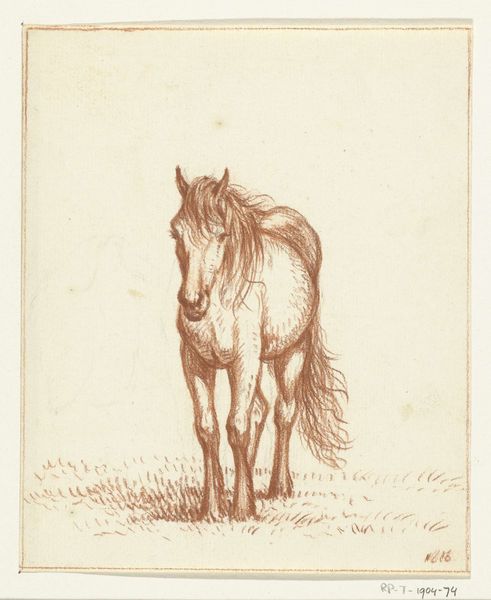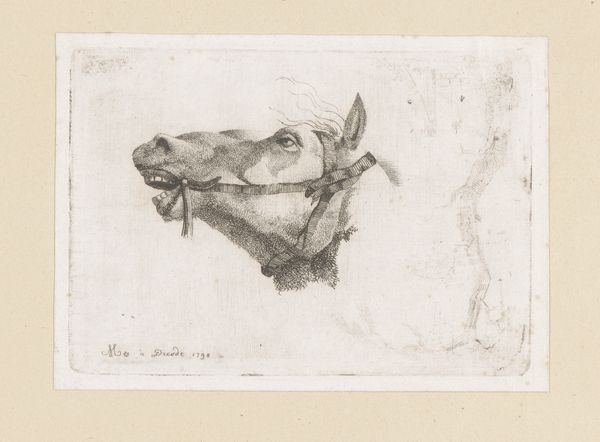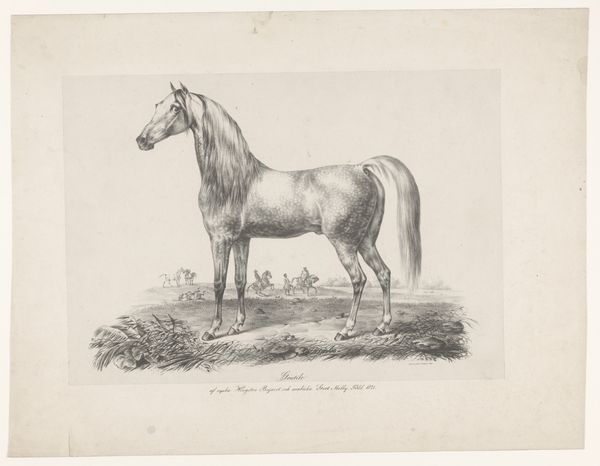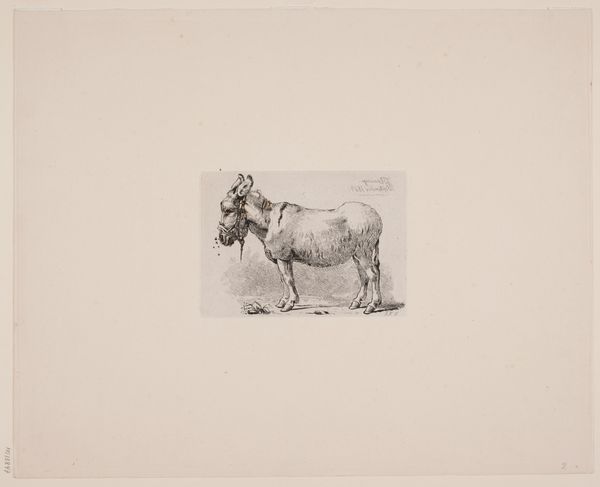
drawing
#
drawing
#
light pencil work
#
quirky sketch
#
pen sketch
#
pencil sketch
#
personal sketchbook
#
ink drawing experimentation
#
pen-ink sketch
#
sketchbook drawing
#
watercolour illustration
#
sketchbook art
Dimensions: 319 mm (height) x 295 mm (width) (bladmaal)
Editor: This is "Hundekranium," or Dog Skull, a drawing made by Johan Thomas Lundbye in 1835. It looks like a quick sketch, a pencil study. What strikes me is the starkness of it, how immediate and unfussy it feels. What are your thoughts on this piece? Curator: I see a window into 19th-century artistic practice, focused less on refined product and more on the conditions of production itself. Look closely. It is the material reality of the drawing—the paper, the pencil, the very act of sketching – that conveys the most meaning. It prompts us to ask, why a dog skull? And how does Lundbye's choice of medium shape its meaning? Editor: I suppose it does make you wonder about the role of sketching in artistic training back then, the raw process behind the art... So the choice of using drawing materials is particularly significant? Curator: Absolutely. It brings to the fore questions about artistic labor and value. Is it merely a preparatory study, or a complete work in itself? This challenges our typical notions of "high art" versus "craft," highlighting the physical process inherent in all artistic creation. We also have to think about what materials Lundbye had at his disposal. Where did the paper and pencils come from, who made them and under what conditions? The context always informs the final artwork. Editor: I see. It's fascinating to think about art making as a whole process that involves labor and social aspects of its production. It makes you see the art in a different light, less as a perfect "finished product." Curator: Precisely. By considering materiality, we're drawn into a larger sphere that interrogates labor, consumption, and even the social hierarchy underpinning artistic practice in the 19th century. Editor: Thank you. Considering it as a process provides a richer interpretation and fresh approach on how to analyze the artwork. Curator: It's a lens that allows us to dissect, rather than just admire, how meaning is constructed through material and process. I've learned something too, thinking about the wider impact of this one little drawing.
Comments
No comments
Be the first to comment and join the conversation on the ultimate creative platform.
